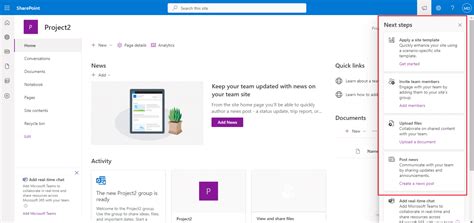How To Make a SharePoint Site for Information and Training
Creating a SharePoint site dedicated to information and training can significantly improve your organization's knowledge sharing and employee development. This guide will walk you through the process, focusing on best practices for creating a user-friendly and effective platform.
Planning Your SharePoint Site
Before diving into the technical aspects, careful planning is crucial. Consider these key points:
1. Define Your Goals and Objectives
What are you hoping to achieve with this SharePoint site? Improved employee onboarding? Centralized access to crucial documents? Streamlined training processes? Clearly defining your goals will guide your site's structure and content.
2. Identify Your Target Audience
Who will be using this site? Understanding your users' technical skills and needs will inform your design choices and content creation strategy. Will it be used by all employees, or just a specific department? This will impact the level of complexity and the type of content needed.
3. Structure Your Content
Organize your information logically. Consider using a hierarchical structure with clear categories and subcategories. Think about how users will navigate the site to find what they need. A well-organized site is far more effective than a disorganized mess. Some example categories could include:
- Company Policies: HR policies, safety regulations, etc.
- Training Materials: Courses, presentations, videos, and quizzes.
- Frequently Asked Questions (FAQs): Answer common employee questions.
- Resource Library: Templates, forms, and other useful documents.
4. Choose the Right SharePoint Plan
Microsoft offers various SharePoint plans; choose the one that best suits your organization's size and needs. Consider factors such as storage capacity, user limits, and available features. This decision is crucial before starting the actual site creation.
Building Your SharePoint Site: A Step-by-Step Guide
Once you have a solid plan, you can start building your SharePoint site. These steps provide a general overview; specifics might vary slightly based on your SharePoint version.
1. Create a New Site
In your SharePoint admin center, create a new site. Select a suitable template (e.g., communication site or team site) based on your needs. A communication site is ideal for broadcasting information, while a team site is better for collaboration.
2. Design Your Site
Customize the look and feel of your site using themes, colors, and logos. Ensure the design is professional, consistent with your brand, and easy to navigate.
3. Upload and Organize Content
Upload your training materials, documents, and other relevant content. Organize it into the categories and subcategories you planned earlier. Use clear and descriptive file names.
4. Implement Search Functionality
Ensure your site has a robust search feature to allow users to easily find the information they need. SharePoint's built-in search is usually sufficient, but consider optimizing metadata for better search results.
5. Leverage SharePoint Features
Take advantage of SharePoint's collaborative features:
- Version Control: Track changes to documents and prevent accidental overwrites.
- Workflows: Automate tasks like document approval or training completion tracking.
- Lists and Libraries: Organize information effectively and efficiently.
- News Web Part: Highlight important announcements and updates.
6. Test Thoroughly
Before launching the site, test it thoroughly to ensure everything works correctly. Get feedback from a small group of users to identify any usability issues.
Optimizing for SEO
While SharePoint isn't a CMS in the traditional sense, you can still optimize it for search engines.
- Use descriptive page titles and meta descriptions.
- Use relevant keywords throughout your content.
- Optimize image alt text.
- Create a sitemap. (This can often be handled automatically by SharePoint.)
- Ensure your site is mobile-friendly.
By following these steps, you can create a SharePoint site that effectively serves as a central hub for information and training, ultimately improving efficiency and knowledge sharing within your organization. Remember, continuous improvement is key; regularly review and update your site to meet evolving needs.
